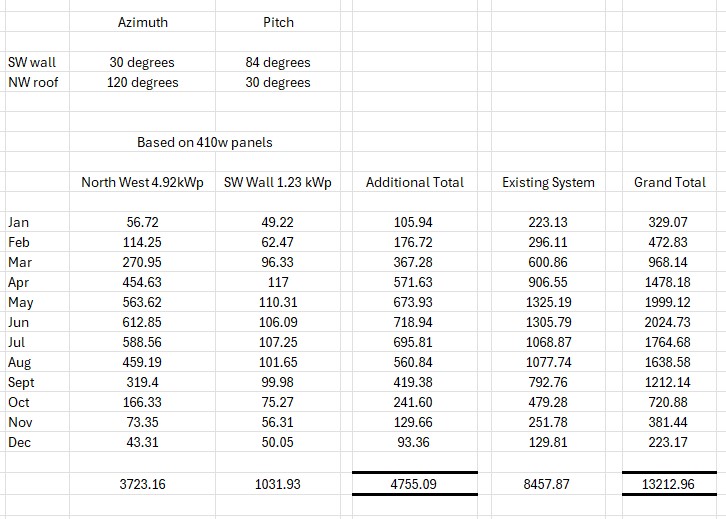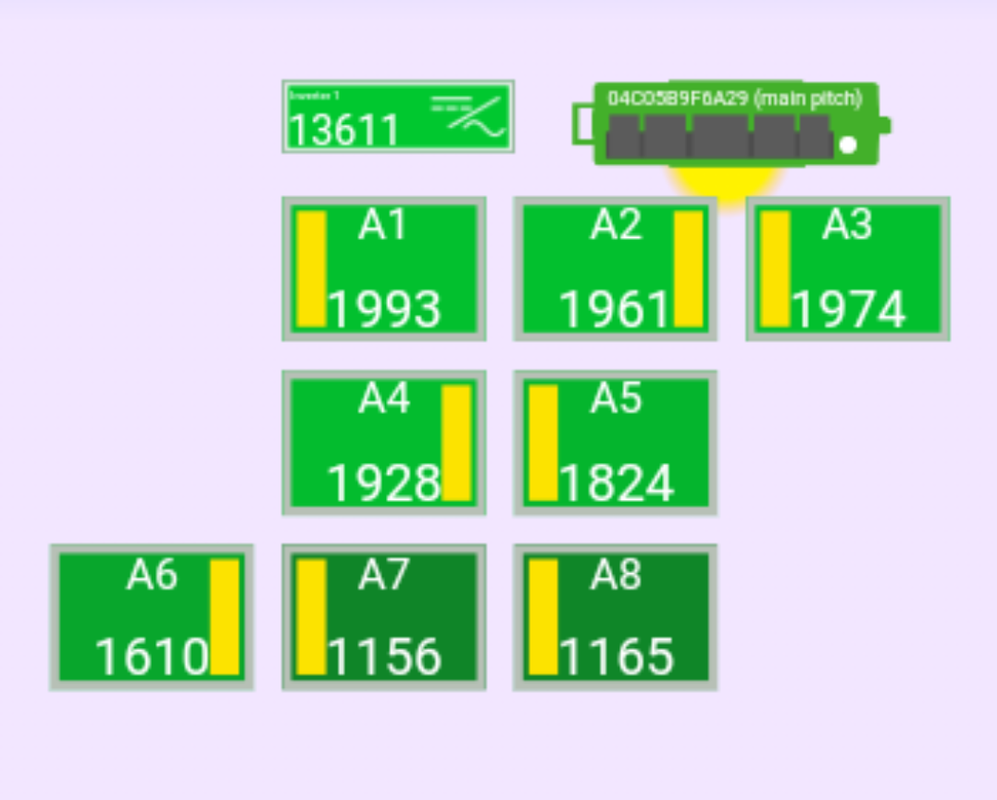Musing my options for an upgrade. Currently we have 7kw of panels on an east facing roof which are currently maxing out our 5kw inverter.
9kw battery is charged already. And I've got a smart immersion due to be fitted shortly.
I'm in two minds as to where to go next.
1) Upgrade to 8kw inverter to get the "missing" 2kw between 9:30-1 ish. Easy to do, just swap the inverter over.
2) Add 5 400w panels to the front to get a longer peak generation, and help over the winter months. Pain, needs scaffolding/roofer etc.
We are limited to a 3.6kwh export here due to our house being on a spur, so once I've charged/heated all the things I have a fairly restricted export.
9kw battery is charged already. And I've got a smart immersion due to be fitted shortly.
I'm in two minds as to where to go next.
1) Upgrade to 8kw inverter to get the "missing" 2kw between 9:30-1 ish. Easy to do, just swap the inverter over.
2) Add 5 400w panels to the front to get a longer peak generation, and help over the winter months. Pain, needs scaffolding/roofer etc.
We are limited to a 3.6kwh export here due to our house being on a spur, so once I've charged/heated all the things I have a fairly restricted export.







